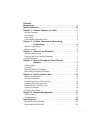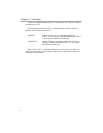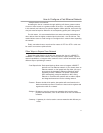
hub to another hub or switch. By uplinking different hubs or switches together, the
number of nodes in a network can be increased. Expanding a network is neces-
sary when planning to increase the number of computers connected, or when plan-
ning to offer new services, such as printing capabilities or Internet access.
Each port of a Dual-Speed Hub acts as an adapter (to conform to the network
environment), a transceiver (to carry data) and a repeater (to connect different seg-
ments together).
Four standard functions are performed by a Dual-Speed Stackable Hub:
- Repeating any signal that it receives from a connected node to another des-
ignated node by referencing the physical address number in the Address
Table.
- Checking the validity of each signal it receives and discarding invalid signals.
- Checking for collisions on the network and partitioning the collisioned nodes
to prevent further disruption of the network.
- Showing whether each network node is currently connected and idle, trans-
mitting data, or in 10BASE-T/100BASE-TX mode.
However, according to the type of device that is connected to a hub, different
applications are supported. Typical applications performed by a hub are:
- Establishing peer-to-peer relations between workstations.
- Interconnecting users' workstations with a server for a stand-alone client-
server network.
- Interconnecting different users' workstations, servers, or other devices, and
uplinking with another Fast Ethernet Dual-Speed hub to form a larger net-
work.
- Interconnecting different users' workstations or servers, or uplinking the hub
with another network device and providing a connection with another network
expansion device, such as a router, switch or bridge.
A hub thus acts as a central piece in a network topology and configuration. It is
necessary to carefully study its physical placement within the configuration of the
network for maximum efficiency.
6
Chapter 2 - continued


















